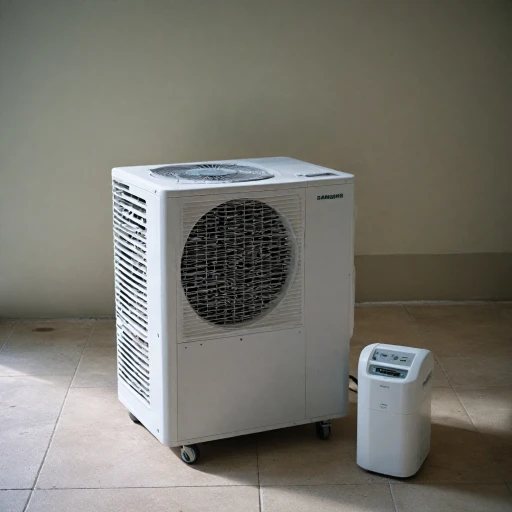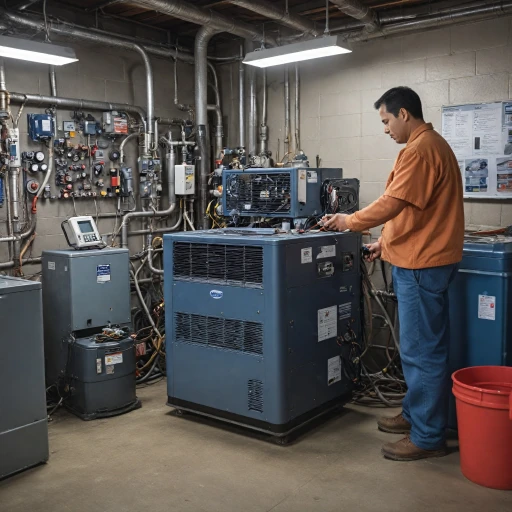
Understanding Your Portable AC
Getting to Know Your Portable Air Cooling System
An important initial step in ensuring optimal performance of any portable air conditioner is thoroughly understanding its components and functionality. These units, designed to bring efficient cooling close to you, rely on various mechanisms that require periodic maintenance. Start by familiarizing yourself with your unit's key components, including the air filter, condenser coils, and exhaust hose. Keeping these parts in prime condition is crucial for the effective operation of your air conditioning system. For more insights on protecting your unit during non-cooling seasons, you might find this guide helpful. Regular maintenance, including the cleaning of internal components, can lead to a significant increase in cooling performance. Simple tasks such as ensuring your air filters are free from dust will help avoid clogs and potential issues, which can decrease the efficiency of your portable air device over time. Moreover, understanding how your unit collects water and manages condensation is essential—particularly when ensuring that your portable air conditioner is free from leaks. Familiarize yourself with the water tank's location and the safe methods for emptying it to avoid any mishaps. In summary, by prioritizing these foundational steps, you can enhance the longevity and efficiency of your portable air conditioning system, thereby saving valuable time and effort in the long run.Cleaning the Filters
How to Keep Your Portable AC Filters Spotless for Maximum Efficiency
One key step in maintaining your portable air conditioner is regularly cleaning the filters. This not only helps in ensuring optimal performance but also extends the life of your unit. A clean air filter enhances efficiency by allowing free flow of air, which is essential for effective cooling.
Before embarking on any cleaning tasks, always make sure to turn off and unplug the unit to avoid any electric shock or damage. Remove the filter from the unit, being careful not to disrupt any other internal components.
Washing the air filters with clean water is crucial. Warm water works best, and adding a mild detergent can help remove dirt and grime more effectively. Let the filters soak for a few minutes before gently scrubbing them to remove any stubborn debris. Rinse thoroughly and allow them to air dry completely before reinserting them into the portable air conditioner.
For those who struggle with allergies or are concerned about odors, deodorizing options are available. Some suggest adding a small amount of vinegar to the cleaning solution as it can neutralize smells from accumulated dust.
Regular cleaning of the air filters will help prevent common issues such as reduced airflow and cooling performance, which could lead to higher energy consumption and operating costs over time. Sticking to a consistent cleaning schedule will definitely save time and ensure your cooling unit functions smoothly. For more comprehensive maintenance tips, check out how to effectively service your portable air conditioner.
Managing Condensation
Preventing Water Woes: Managing Condensation
Condensation is a natural by-product of the cooling process in air conditioners, but if not properly managed, it can lead to performance issues and even damage your unit. Proper handling of condensation is essential for maintaining optimal performance. One of the first steps you must take is to ensure the drainage system of your portable air conditioner is functioning correctly. Many portable units collect water in an internal water tank which needs regular emptying. Neglecting this task can lead to leaks or overflow, severely impacting your unit's efficiency. Systematically checking and emptying the water tank will help you avoid any unwelcome surprises. If your portable air conditioner features a continuous drainage option, consider connecting a hose to facilitate the removal of water without the need to manually empty the tank regularly. Ensuring the exhaust hose is properly connected is another essential maintenance step to prevent leaks and manage humidity effectively. Additionally, inspecting the condenser coils for excessive moisture or dirt build-up is crucial. A thorough cleaning with a mild detergent can help maintain the coils’ cooling performance and energy efficiency. This prevents water from building up in these critical components, which could otherwise result in decreased air quality and cooling effectiveness. For more information on the internal components involved in this process, check out this detailed guide on portable air conditioner components. By prioritizing these maintenance tips, your portable unit will run smoothly and keep your space comfortably cool.Proper Storage Techniques
Storing Your Portable AC for Longevity
When the cooling season comes to an end and it's time to put your portable air conditioner into storage, doing it the right way will help extend its life and maintain its performance. Here's a step-by-step guide to ensure your unit is ready for next summer. Firstly, it's important to clean the unit thoroughly. Start with the air filters; these need careful cleaning with a mild detergent to remove any dust or debris that might have accumulated during its use. A clean air filter is crucial for the optimal performance of your portable unit. Next, ensure that you empty and dry the water tank completely to prevent any potential water leaks or mold development while the unit is not in use. You can do this by gently tilting the unit to remove any remaining water. Additionally, check the exhaust hose for any blockages or wear and tear, as these might lead to inefficiencies when you start using the unit again. Pay attention to the internal components as well, such as the condenser coils. If possible, a thorough cleaning with a damp cloth and mild detergent will prevent dust build-up, which can affect the unit's cooling performance over time. Once everything is clean and dry, it's recommended to cover the portable air conditioner with a breathable fabric to protect it from dust accumulation while it is stored away. This step, along with proper cleaning, will help avoid issues and save you time in the next cooling season. By following these steps, you ensure that your portable air conditioner remains in top condition, ready to deliver cooling efficiency when you need it again.Troubleshooting Common Issues
Addressing Frequent Snags
When it comes to portable air conditioners, encountering a few common issues is not unusual. By addressing these promptly, you can maintain its efficiency and extend its lifespan. Here’s how you can tackle some frequent hurdles:- Airflow Obstructions: Over time, debris can settle in your unit, causing blockages. Make sure to clean the air filter regularly to ensure a steady flow of air and optimum cooling performance. This simple step will help keep your unit running efficiently.
- Leaks and Condensation: Your portable unit may encounter water leaks due to excessive condensation. First, check the water tank and empty it regularly to prevent overflow. Ensure the exhaust hose is securely attached, as a loose connection can lead to leaks. These maintenance tips will help reduce the risk of damage.
- Sound Concerns: If your portable air conditioner starts making unusual noises, check for loose components. Tightening any rattling parts and conducting routine maintenance can often resolve these issues, leading to smoother operation.
- Poor Cooling Performance: Should you notice a decline in cooling efficiency, it might be time for a thorough cleaning of internal components like the condenser coils. This can vastly improve performance and avoid potential breakdowns.
- Unit Not Powering On: If your air conditioner fails to start, inspect the power supply and ensure it’s connected correctly. Also, look at the control panel for any error messages, which may indicate what needs attention.
Energy Efficiency Tips
Boost Your Portable Air Conditioner's Efficiency
Enhancing the energy efficiency of your portable air conditioner is crucial for maintaining its optimal performance and prolonging its lifespan. Here are some practical steps you can take to help your unit run more efficiently:- Regular Cleaning of Components: Consistent maintenance is key. Ensure thorough cleaning of the air filter and other internal components like the condenser coils. This step keeps your unit running smoothly and prevents issues that may lead to poor cooling performance.
- Check for Air Leaks: Inspect the exhaust hose and connections for any leaks. Even small air leaks can significantly impact the cooling efficiency. Resealing or replacing faulty components will help in maintaining a good seal around the portable unit.
- Manage Water Levels: Some units have water tanks to collect water that condenses during operation. Removing and emptying the water tank regularly ensures the unit doesn’t become overburdened with excess water, which can impact performance.
- Optimal Placement: The placement of your portable air conditioner can affect its efficiency. Keep unit away from direct sunlight and ensure it has enough space for proper air circulation. This simple adjustment can lead to improved cooling performance.
- Use Mild Detergents: When cleaning the exterior or any removable components, using a mild detergent will not only prevent damage but also keep the portable air unit looking new and functioning well.
- Regularly Manage Condensation: As described in a previous step, managing condensation is vital. A clean water tank or well-functioning exhaust system prevents any overflow or leaks, ensuring efficient operation.












